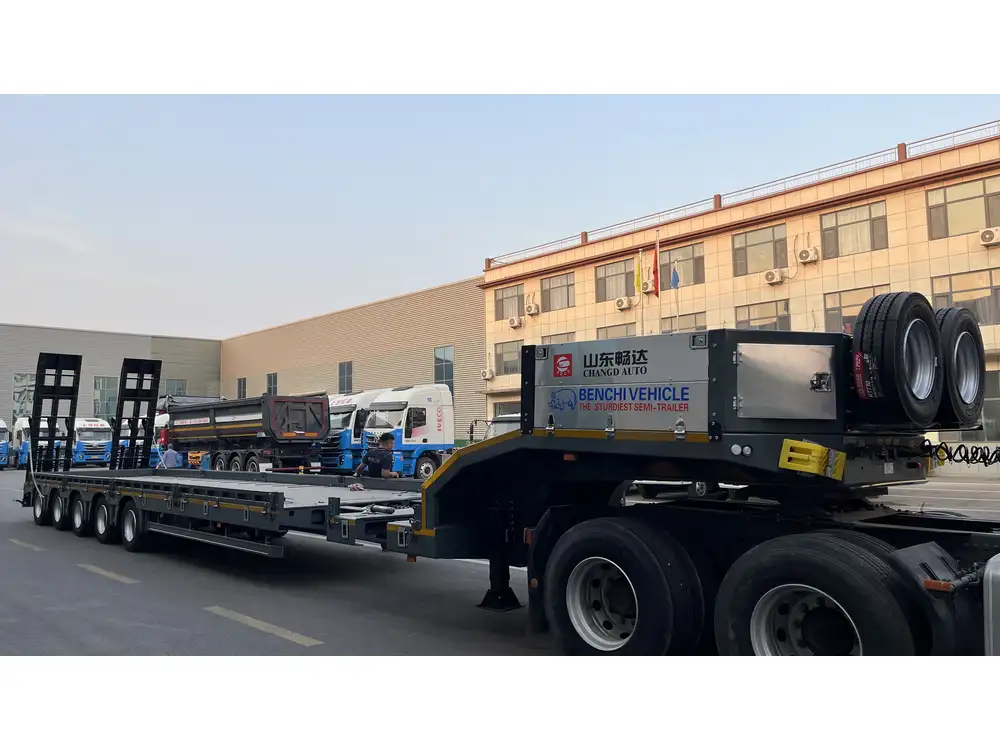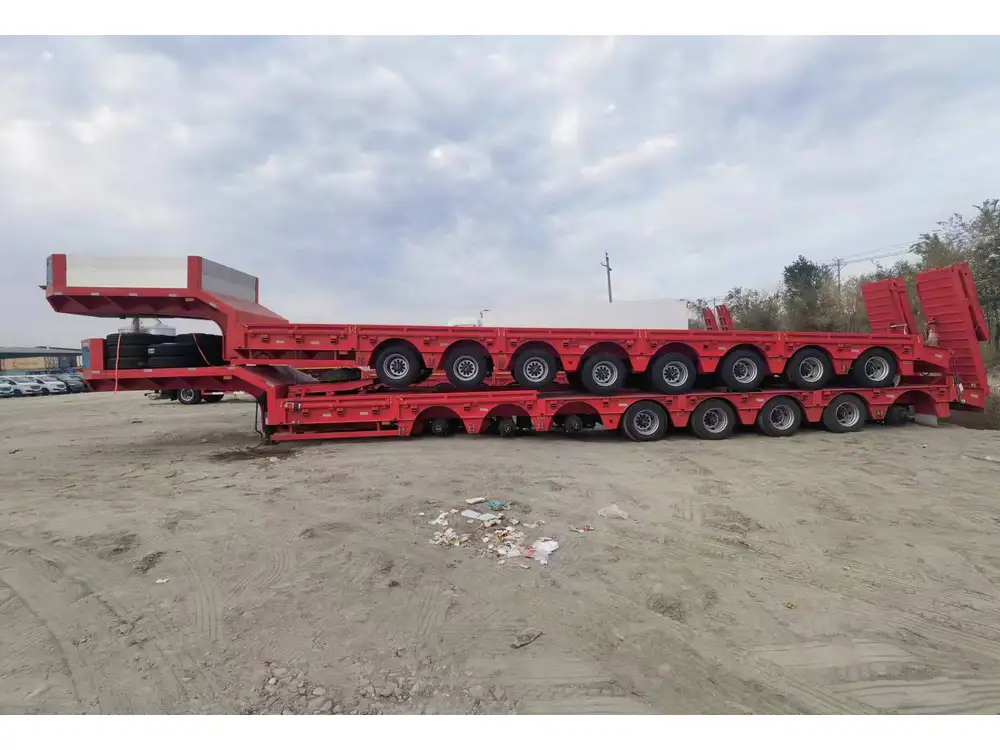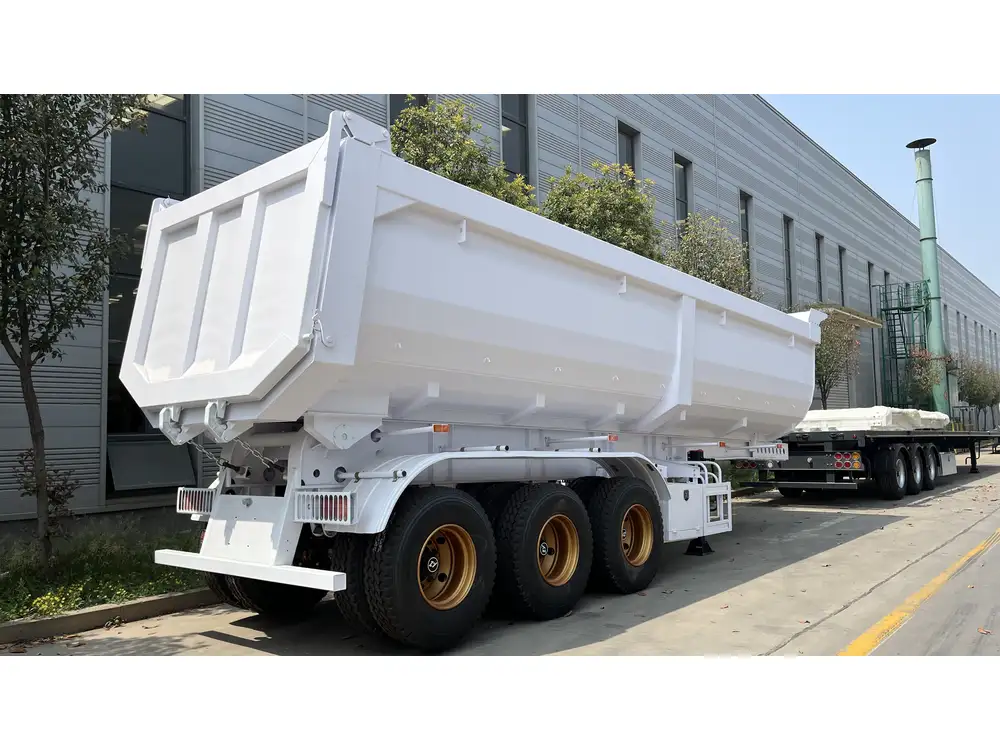Bleeding hydraulic lines on a dump bed trailer is a fundamental maintenance procedure that ensures optimal functionality and safety of the trailer’s hydraulic system. Properly bled hydraulic lines can improve the performance of lifting and lowering mechanisms, reduce the likelihood of system malfunctions, and extend the overall lifespan of the hydraulic components. In this detailed guide, we will provide a step-by-step approach to effectively bleed the hydraulic lines of your dump bed trailer, ensuring that readers have a thorough understanding of the process and potential pitfalls along the way.
Understanding the Importance of Bleeding Hydraulic Lines
Before we delve into the practical aspects of bleeding hydraulic lines, it’s paramount to understand why this process is crucial:
Prevention of Air Bubbles: Air trapped in hydraulic lines can lead to erratic movements and decreased lifting power. It produces a spongy feel in the operation, resulting in inefficiency.
Extended Equipment Life: Regular maintenance, including bleeding lines, can help in preserving the integrity of hydraulic components, reducing wear and tear.
Safety Assurance: Uncontrolled movements of the dump bed can pose significant safety risks to operators and bystanders. Proper bleeding mitigates this risk.
Tools and Equipment Needed
To effectively bleed the hydraulic lines on your dump bed trailer, you’ll need a set of tools and equipment. Here’s a comprehensive list:
| Tool/Equipment | Function |
|---|---|
| Hydraulic Jack | To elevate the trailer safely. |
| Drain Pan | For collecting spilled hydraulic fluid. |
| Wrenches (Adjustable & Socket) | For loosening and tightening hydraulic fittings. |
| Hydraulic Fluid | Ensure compatibility with your system. |
| Hoses | For connecting to bleed screws if necessary. |
| Safety Goggles | To protect your vision during the process. |
| Funnel | For easy pouring of hydraulic fluid if needed. |

Step-by-Step Guide to Bleeding Hydraulic Lines
Step 1: Safety First!
Begin by ensuring that you are following all safety protocols. Wear safety goggles and gloves to protect yourself from hydraulic fluid, which can cause irritation. Ensure the trailer is on a level surface, and use wheel chocks to prevent any movement during the procedure.
Step 2: Elevate the Trailer
Utilize a hydraulic jack to raise the dump bed trailer. Once elevated, secure it with jack stands to provide additional safety and prevent the trailer from accidentally lowering during maintenance.

Step 3: Locate the Bleed Valve
Identify the bleed valve on the hydraulic cylinder. This valve is typically located at the highest point of the hydraulic system to ensure all trapped air can escape. Refer to your manufacturer’s manual for specific locations, as they can vary by model.
Step 4: Prepare and Place the Drain Pan
Position a drain pan under the bleed valve to catch any hydraulic fluid that may spill during the process. This is an excellent opportunity to reclaim and recycle hydraulic fluid.
Step 5: Opening the Bleed Valve
Using an appropriate wrench, carefully open the bleed valve. You should hear a hissing sound as the trapped air escapes.
Tip: Just slightly loosen the valve to start with. It’s better to release less fluid than to create a mess.

Step 6: Operating the Hydraulic System
While the bleed valve is open, ask an assistant to operate the hydraulic controls of the dump bed, raising and lowering it. This action should create a steady flow of hydraulic fluid out of the bleed valve.
- Watch for Bubbles: As fluid escapes, observe for air bubbles in the fluid. This is indicative of air being purged from the lines.
Step 7: Close the Bleed Valve
Once a steady stream of hydraulic fluid flows without bubbles, promptly close the bleed valve to prevent air from re-entering the system. Make sure the valve is tightened securely but do not over-tighten, as this could damage the threads.
Step 8: Check the Fluid Level
After bleeding the lines, it is crucial to check the hydraulic fluid level. Open the reservoir cap and inspect. Ensure the fluid reaches the recommended level, adding hydraulic fluid if necessary.

Step 9: Test the System
With the bleed valve closed and fluid levels topped off, start the hydraulic system. Run the dump bed through its full range of motion several times to distribute the oil evenly. Observe the operation for any irregularities or sponginess, which might indicate further air entrapment.
Step 10: System Monitoring
After completing the bleeding process, continue to monitor the hydraulic system during subsequent uses. Regular checks will ensure that air does not re-enter the system, and help catch any leaks or issues early.
Common Issues and Troubleshooting

Air Bubbles Persist
If air bubbles are still visible after the bleeding process, revisit the bleed valve and repeat the bleeding steps. Ensure that all connections are tight and check for leaks along the highway lines.
Difficulty in Operating Hydraulic System
If the hydraulic system is still hard to operate or not responding, this may indicate other issues such as:
- Faulty Hydraulic Pump: A malfunctioning pump may not generate adequate pressure. Inspect or replace if necessary.
- Blockages or Kinks in Lines: Inspect hoses for blockages. This requires a thorough visual inspection.
Inconsistent Fluid Levels
If you consistently find your fluid levels dropping, this indicates a leak somewhere in the hydraulic system. Look for:
- Damaged Hose Fittings: Check seals and connections for signs of wear.
- Reservoir Issues: Ensure there are no unnoticed leaks in the reservoir itself.

Maintenance Tips for Your Dump Bed Trailer’s Hydraulic System
Aside from bleeding the lines, regular maintenance is essential to ensure the longevity of your dump bed trailer. Here are some maintenance tips:
Routine Inspections: Regularly inspect hoses, fittings, and the hydraulic reservoir for wear and tears.
Fluid Changes: Change hydraulic fluid in accordance with the manufacturer’s recommended schedule.
Lubrication: Keep all moving parts well-lubricated to prevent rust and stiffness.
Clear Blockages: Ensure that all hydraulic lines are free from dirt and debris.
Conclusion
Bleeding the hydraulic lines of a dump bed trailer is not just a maintenance task; it is a fundamental procedure that enhances safety, functionality, and durability. By following this comprehensive guide, you can ensure that the hydraulic system operates smoothly and efficiently, thereby reducing potential downtime and extending the life of your equipment.
Maintaining your dump bed trailer requires commitment and attention to detail, but the rewards of safe and reliable operation are invaluable. By implementing the steps outlined above, you will be well-prepared to tackle this essential task, ensuring your trailer continues to serve you effectively in all your transport needs.



